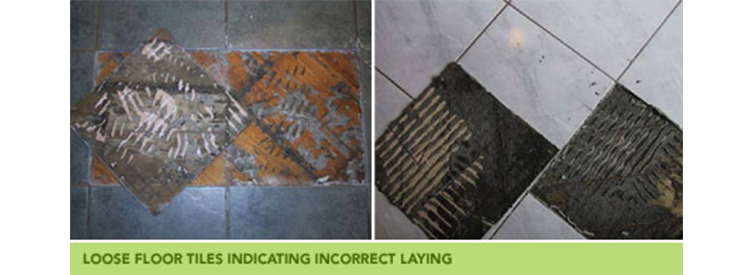
If your floor tiles are drummy or hollow sounding, you really do need to take some action. This situation will generally become obvious as soon as the tiles are laid.
It means that the adhesive does not have a good bond between the tiles and the substrate, or that there are hollow voids of missing adhesive under the tiles. If tiles are laid correctly and there is 100% adhesive coverage, and the bond is sound, then the tiles effectively become one with the substrate.
As the floor is used and subjected to foot traffic, the tiles that are not correctly laid will most likely break, crack, chip, or fail in some other way. In extreme circumstances, the tiles will actually lift off the floor.
Drummy or loose tiles can be caused by a number of reasons including:
• Not enough adhesive under the tiles, or 'dobbing' of the adhesive under the tiles. This leaves hollow voids.
• The wrong adhesive has been used and it has not bonded with to the tiles or substrate. Or, in wet areas, the adhesive is not suitable and has broken down.
• The adhesive has skinned before the tiles were laid. This means that the adhesive was put down and left too long and the surface has dried. This prevents a sound bond to the tile.
• If the suspect tiling is over a timber floor, then the incorrect adhesive may have been used. Special adhesive must be used for a permanent and sound bond over timber, and the instructions followed closely.
• Excess movement of the floor boards can also create a problem, especially if thr adhesive is not a 'flexible' product.
The bad news is that any drummy or loose tiles on a floor will cause problems down the track.
This situation is not a fault of the tiles; the builder, tiler or tile retailer must take responsibility.
If the retailer specified the wrong adhesive, then that needs to be corrected. The first step is to talk to the retailer and check the suitability of the adhesive.
If the tiler has supplied the adhesive and it is not suitable, or he has let it skin, or he has not prepared the floor correctly; then he will need to correct the problem.
Likewise, if there is excessive 'bounce' in the timber floor, then the builder or tiler needs to rectify the project. The excessive floor movement should have been fixed before the tiles were laid.